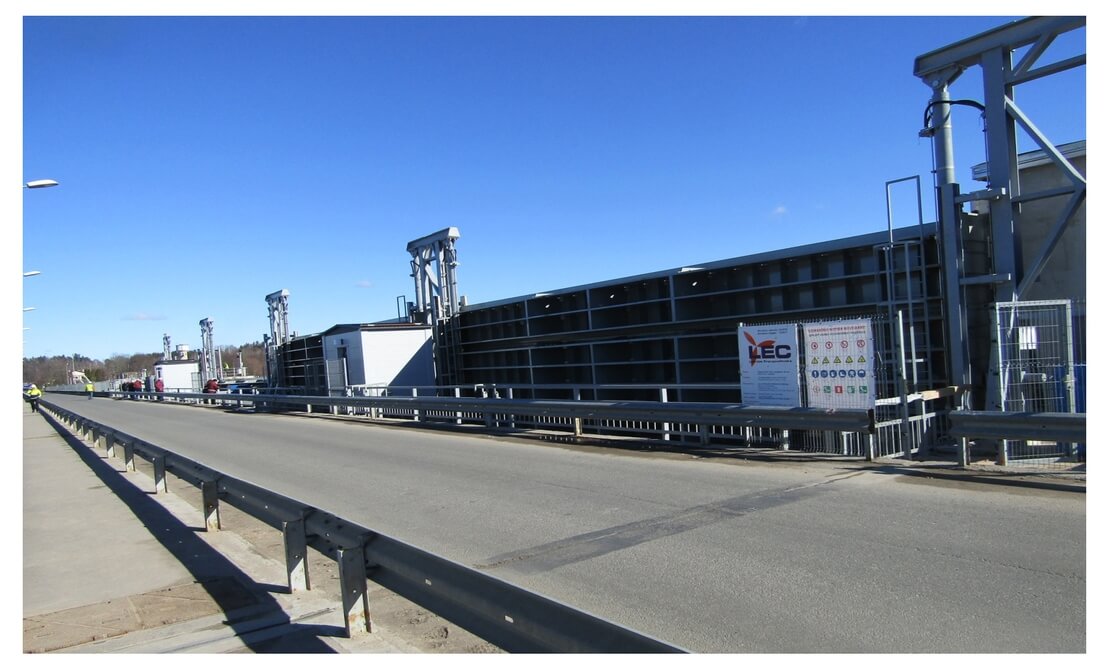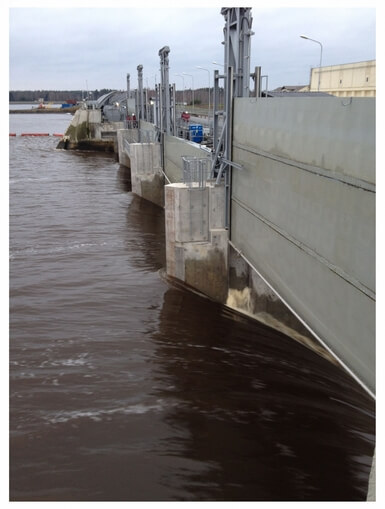Kegums Hydro Power Plant starting from the idea until now
1936
On 4 August, the Cabinet of Ministers of the Republic of Latvia passes a law on the construction of Kegums Power Plant. In the following days, the first works on the Kegums HPP construction site start: a temporary wooden bridge across the Daugava River is erected and temporary protective dikes for setting up the construction site are built.
1937
On 22 May
the foundation stone laying ceremony for Kegums Power Plant is held.
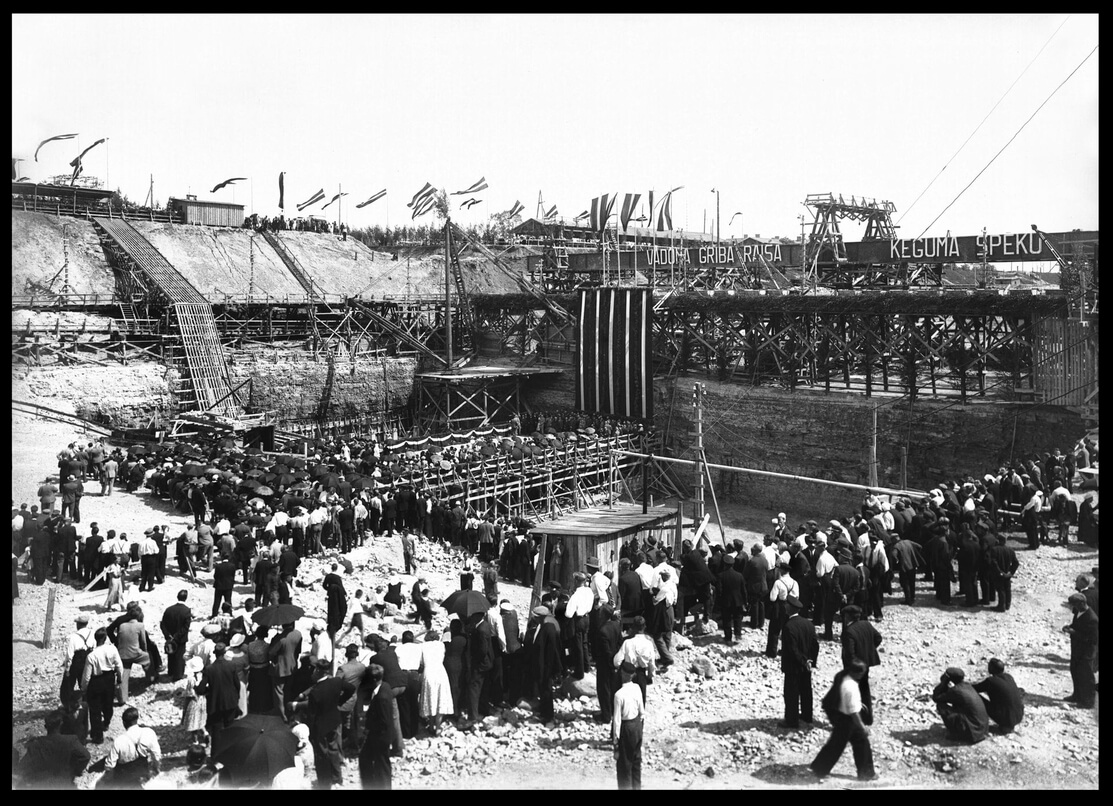
Construction of a permanent steel bridge across the Daugava River is launched.
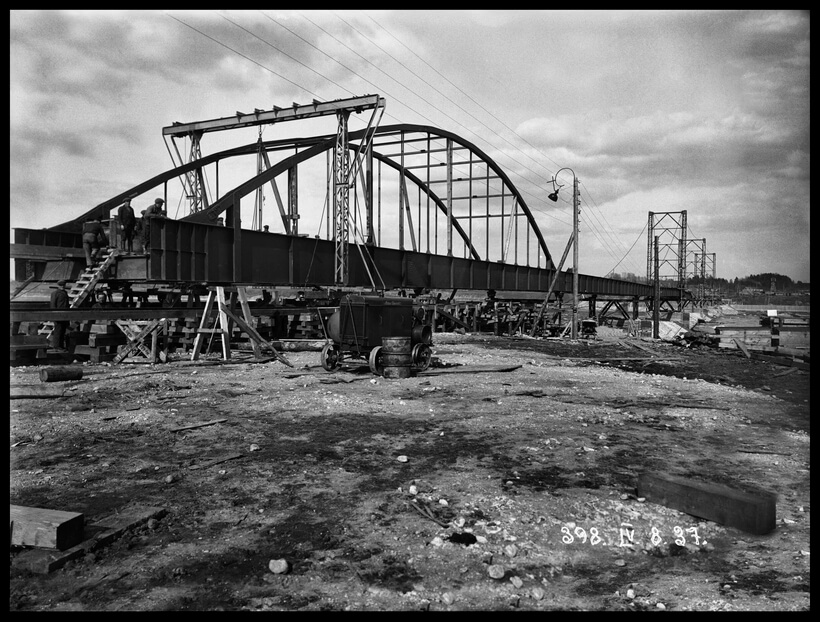
Construction of the Kegums HPP building and hydropower unit turbine draft tubes is started.

1938
Concreting of the engineering structures of the dam is carried out. Construction of the water reservoir protective dikes is launched. Operating chambers of the hydropower unit turbines are assembled.
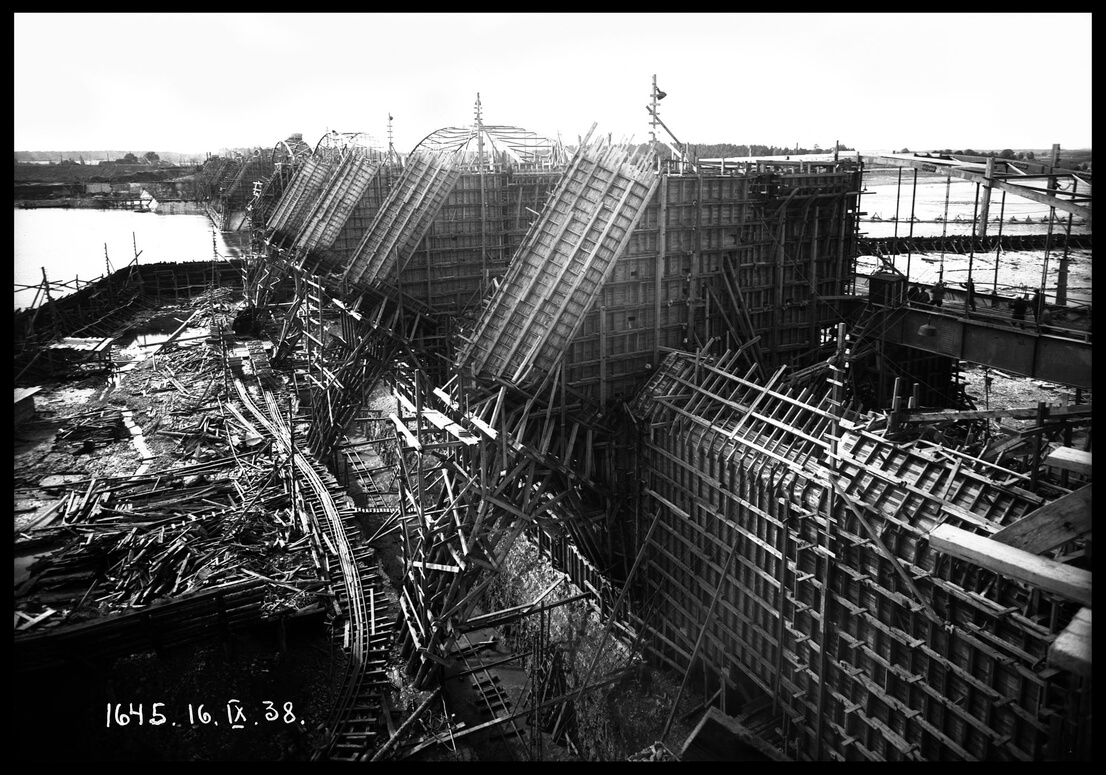
1939
On 10 February
during ice drift, the temporary protective dikes of the structure are destroyed at the high water level in the Daugava River. The Kegums HPP construction sites are flooded with water and ice.
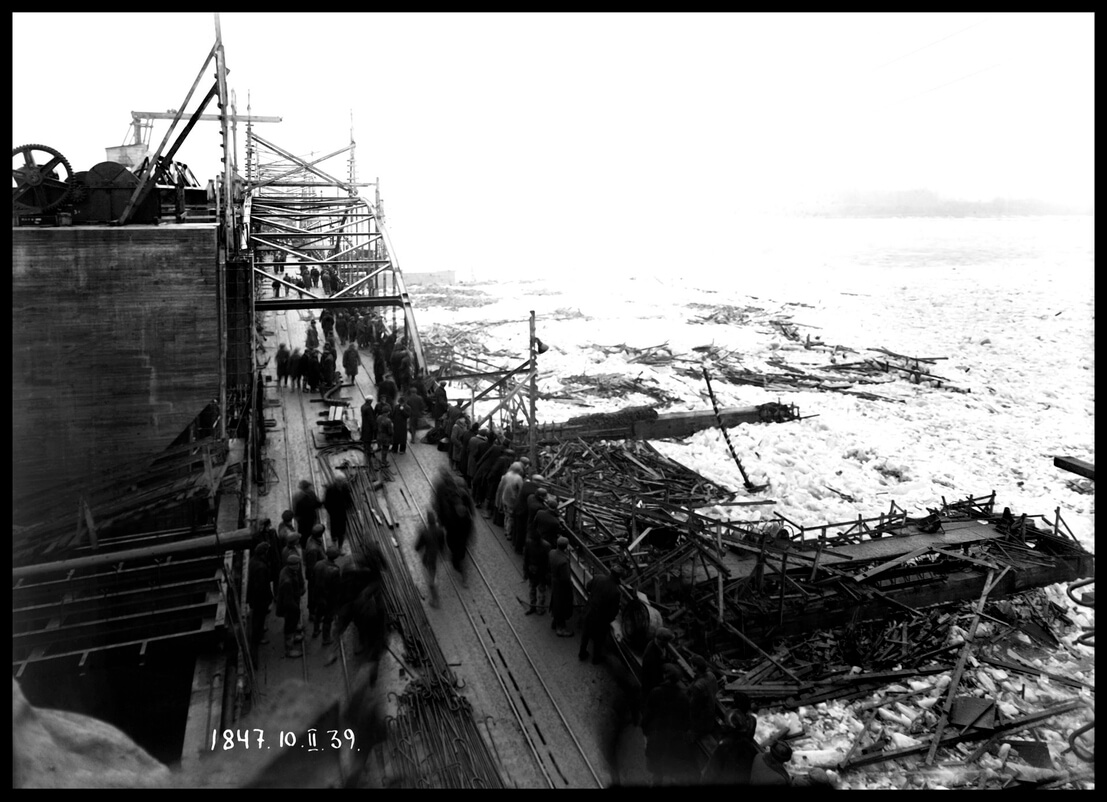
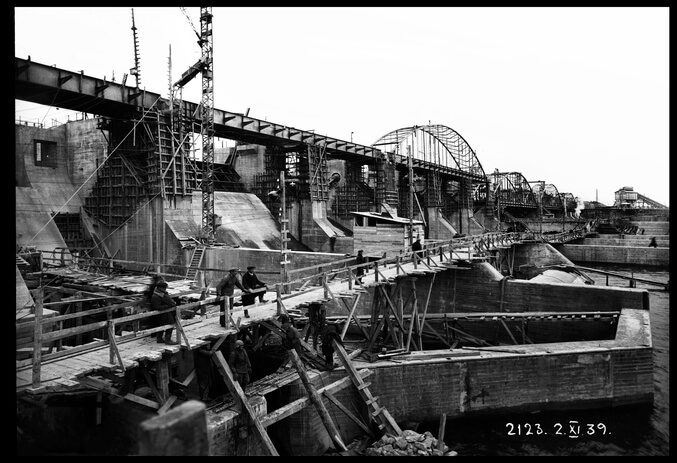
Construction of Kegums HPP, assembly of equipment and erection of bridge sections on permanent concrete supports at the height envisaged in the project continues.
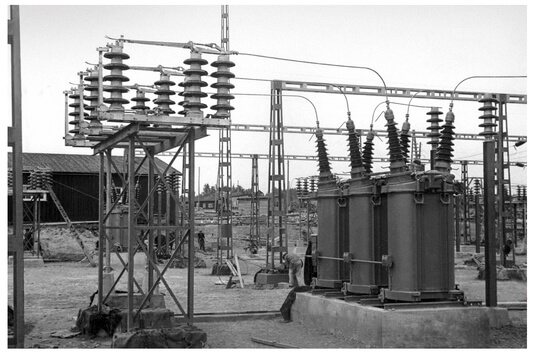
On 15 October
the first hydropower unit is started and the Kegums-Riga 88 kV power line is switched on.
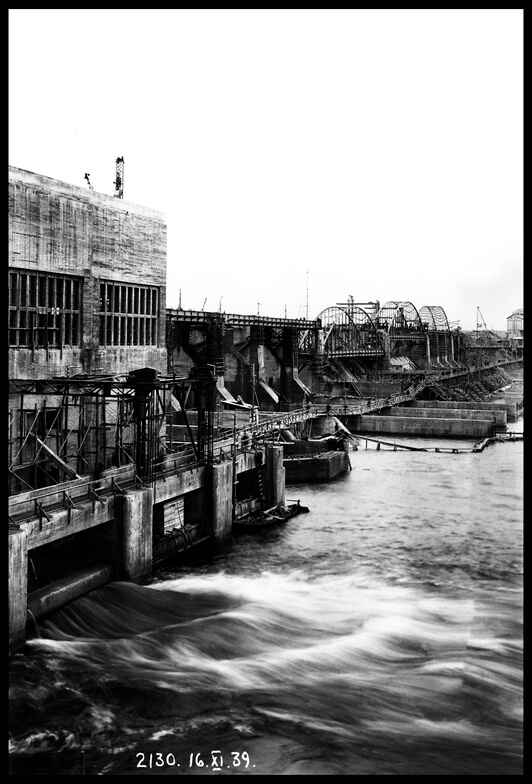
On 17 November
the second hydropower unit is started and customers in Riga begin to receive permanent supply of electricity generated at Kegums HPP.
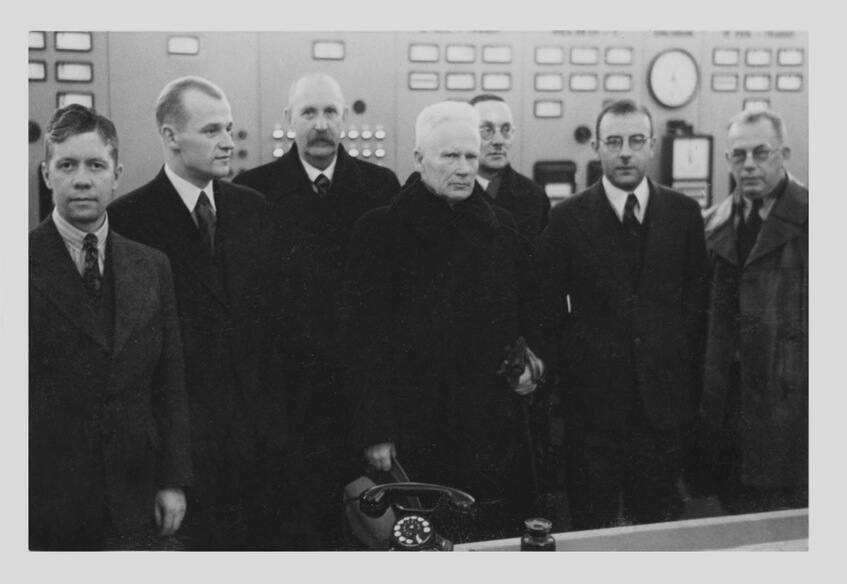
On 4 December
the operation of the power plant is taken over by Latvian engineering staff under the supervision of Pāvils Krasovskis and Edgars Kelders. Supply of electricity generated at Kegums HPP to customers in Zemgale is started.

On 22 December
the State Electricity Enterprise "Kegums" is established, forming the basis for the single energy system of Latvia.
1940
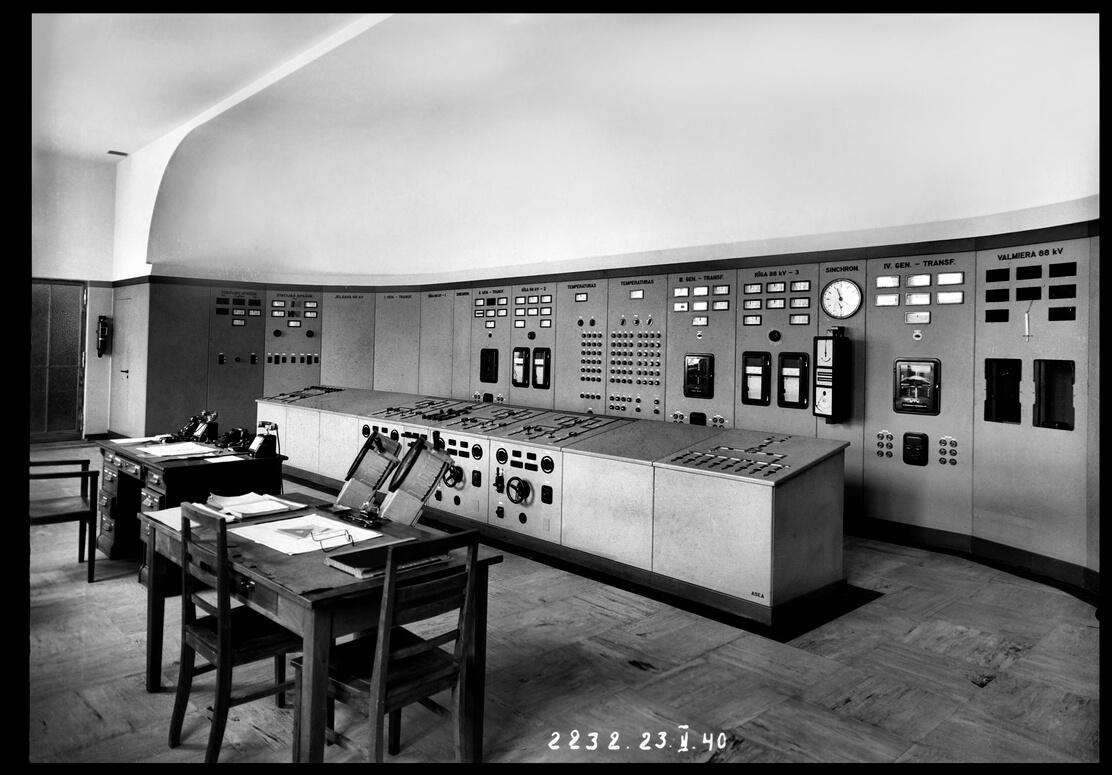
In February, the Kegums – Ieriki power line is switched on, starting electricity supply to customers in Vidzeme. The assembly of the Kegums HPP valve gates and the construction of the fish pass and rafting canal continue. On 1 November, the third hydropower unit of Kegums HPP is started, reaching a capacity of 54 MW.
1944
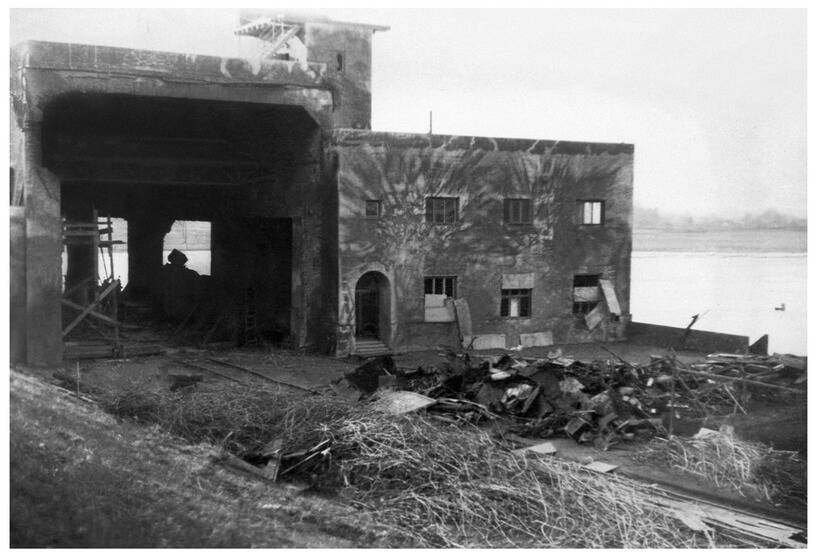
During the Second World War, the power plant’s building, control boards, turbine gates and their control units, generators, transformers, 88 kV outdoor equipment, the 9th radial gate, and both 80-metre long spans of the bridge are blown up.
1945
The first renovated Kegums HPP hydropower unit is started.
In 1946, the second renovated unit is started and in 1947 – the third one.
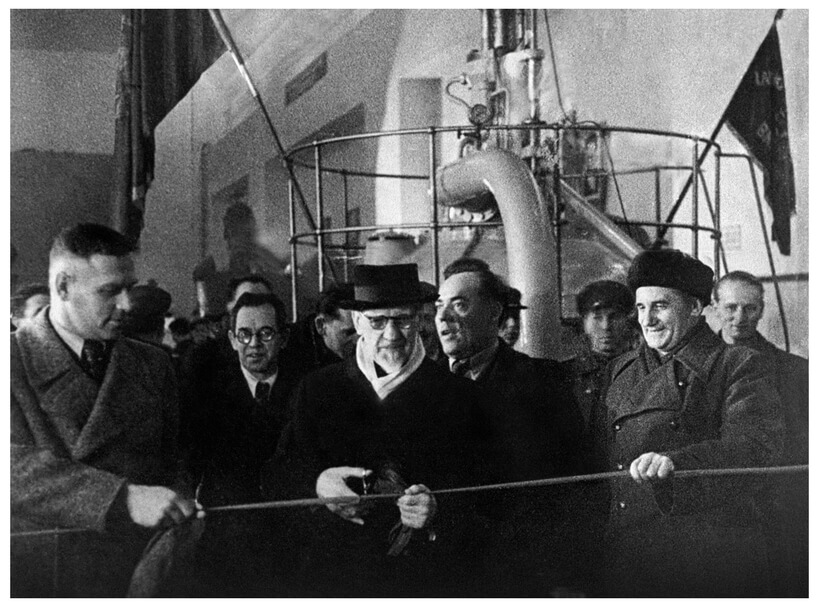
1953
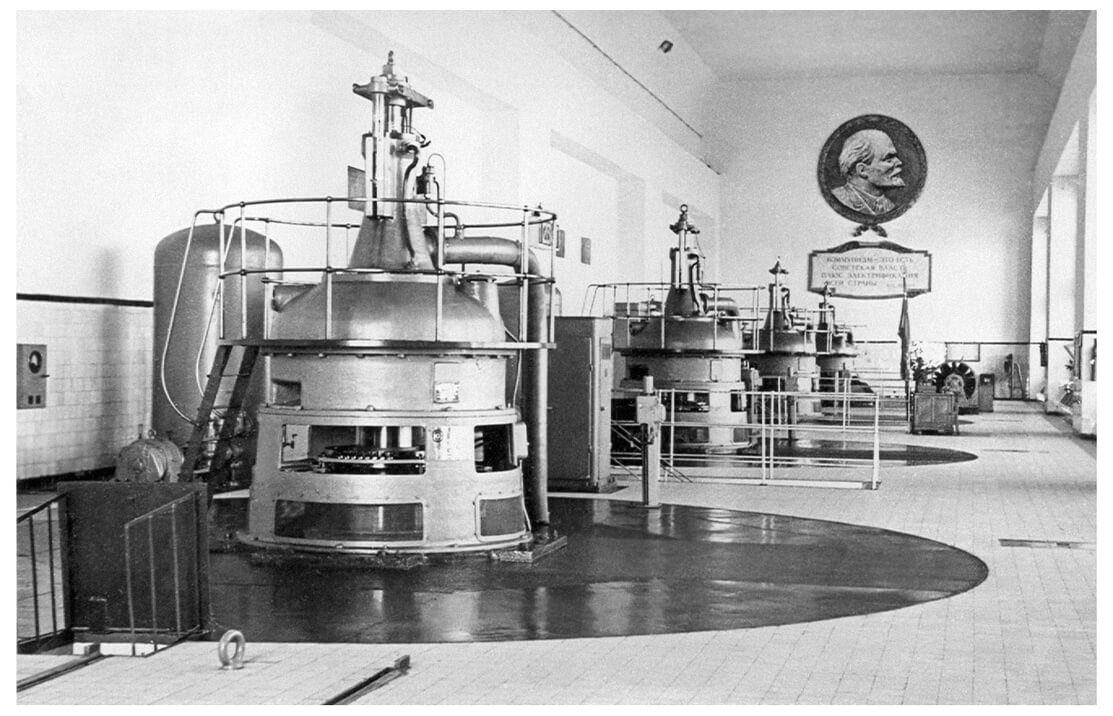
The fourth Kegums HPP hydropower unit is started, reaching the designed capacity of
72 MW
1975
The expansion of Kegums HPP begins by constructing a new plant on the left bank of the Daugava River: Kegums HPP-2.
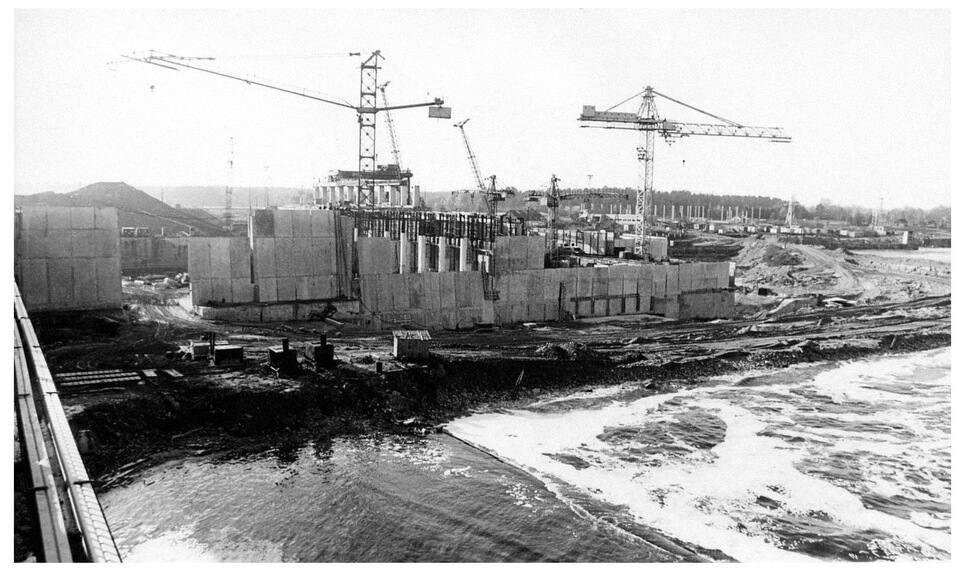
1979

All three Kegums HPP-2 hydropower units are started. The power plant reaches the full designed capacity of
192 MW
1998
Reconstruction of the Kegums HPP-1 hydropower units and control systems is started, using the loan granted by the European Bank for Reconstruction and Development (EBRD) for the modernisation of hydropower plants.
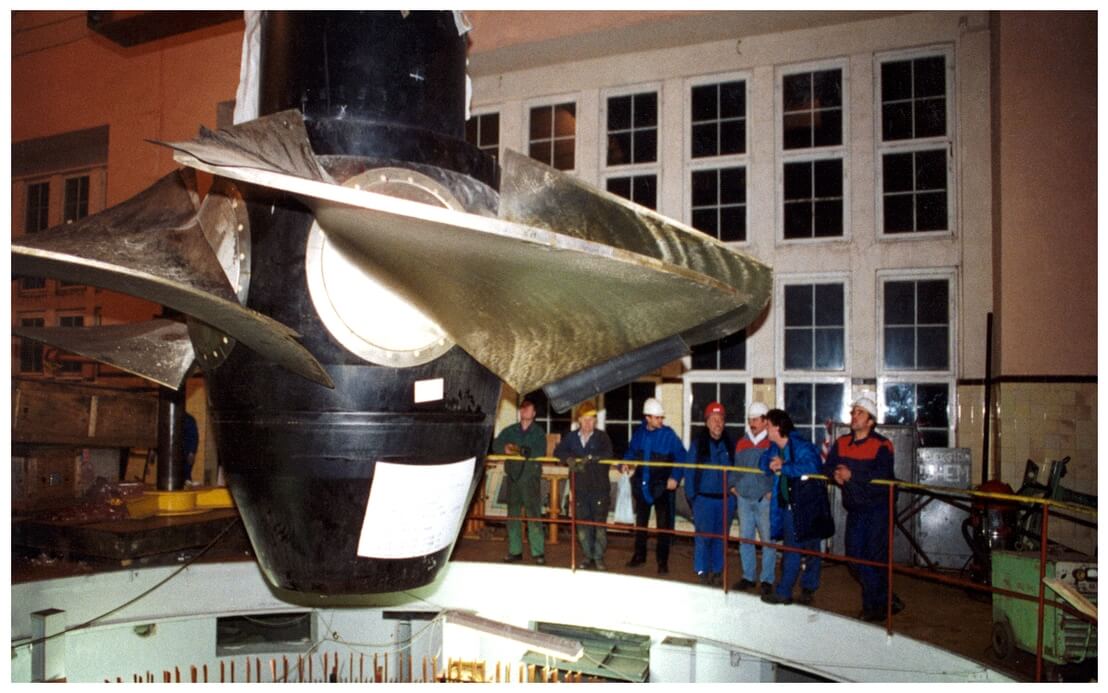
2001
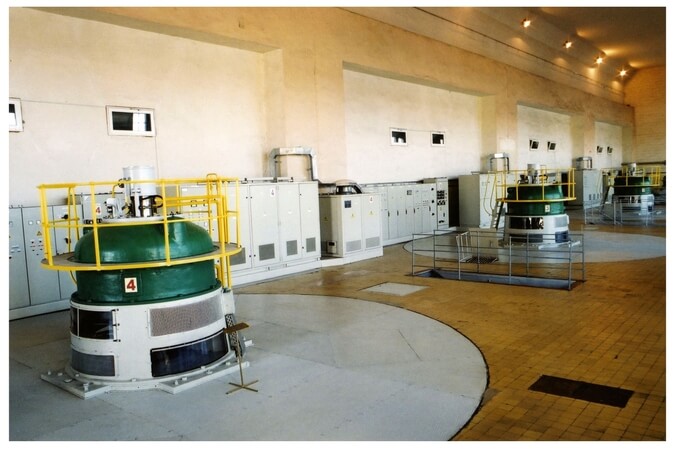
Reconstruction of Kegums HPP-1 is completed. The generation of electricity is increased by 25 MW, while the operational capacity is renewed for 40 years.
2012
Reconstruction of the Kegums HPP-2 hydropower units and the forebay ice guard system is carried out. The ice retention defence boom damaged in 2010 is replaced, creating three anchor sheaves on the bed of the river for additional resilience of the new defence boom, providing the protection of the Kegums HPP-2 forebay against ice and drifts.
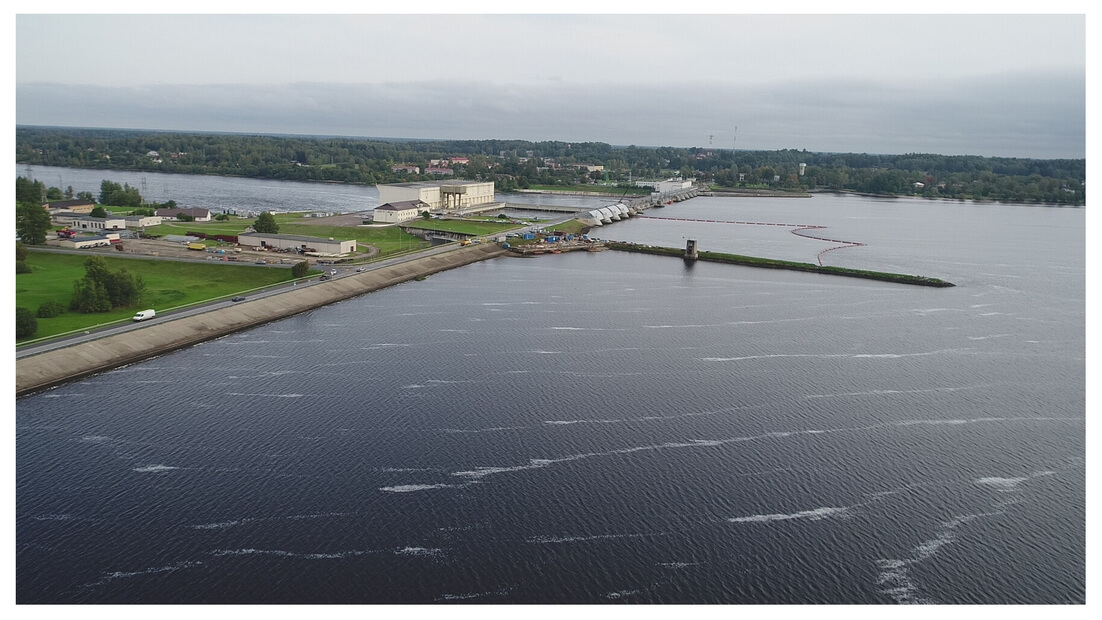
2015
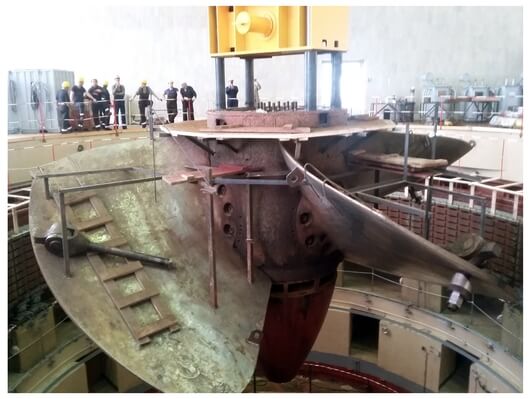
Reconstruction of the Kegums HPP-2 equipment is started.
2016

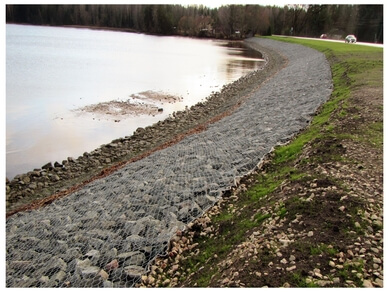
Reconstruction of the left bank dike of the Kegums HPP water reservoir is carried out.
2018
Reconstruction of two gates of the Kegums HPP water spillway launched in 2015 is completed: four new vertical lift-up gates have been installed in place of each valve gate. This has resulted in significantly safer gate operation during the spring flooding, faster manoeuvring and remote control.
